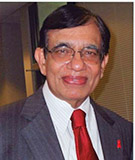
SITTING DISEASE … STEPS TO TAKE FOR PREVENTION! PART II

The human body was made to move around, not to sit or stand still. When the body is in motion, blood flow to the tissues increases along with an increase in oxygen delivery, and results in improved tissue function. This makes you feel better and improves your thinking and ability to focus, the end result being you become more creative and productive. This is the reason that after exercise, you feel relaxed and more energetic. Unfortunately, sedentary jobs have risen significantly during the past few decades and no doubt have contributed to the increasing prevalence of chronic back pain and numerous other problems.
“Reducing the amount of time you sit by even an hour or two a day could have a significant and positive impact on your future,” says Dr. Jacquelyn Kulinski, assistant professor of cardiovascular medicine and a lead researcher in the Wisconsin study (mentioned in the last column).
I asked my nephew Ajith, who is a computer specialist working for Amazon.com Inc., how many hours he sits during work.
“Oh, we have instructions from above, we have to periodically stand up, and you know what, our computers stand up with us. Isn’t that neat? So, we can work while standing for whatever time we want.”
“That’s exactly what you have to do, to prevent this disease,” I said, relieved.
“What do you do if you have a sitting job?” asked one of my friends, whose work demands a lot of sitting. “Move more, sit less,” advocates the American Heart Association. Well, that’s the basic solution. There are many ways to accomplish that. One thing for sure is, after eight hours of work in your office, don’t go home and sit in front of your computer or TV. Do some exercise of your choice — actually simple walking is good enough. Since I spend a lot of time in front of the computer these days, my wife constantly reminds me, “Don’t sit for too long, stand up and stretch a bit.”
While sitting burns 1.02 calories a minute, standing burns 1.36, which equates to 160 extra calories burned per day, say physiologists. That’s why the ‘standing desk’ concept has come into existence. In other words, you can sit when you want and stand up and work as needed adjusting the desk. “Demand for the standing desk has gone up enormously,” says Mike Mayos, director of standing desk company VariDesk. In other words, those who have sitting jobs are becoming more aware of the perils of sitting too long and looking out for their own well being. The airline magazine I was browsing through the other day during a flight to Chicago had two pages of ads devoted to various types and brands of standing desks.
Sit-stand desk workers seem to have less bodily aches and pains at the end of the day than those who sit continuously. Also, those who work with sit-stand desks showed 46 percent increase in productivity than their counterparts who used the traditional seated desk. Another concept in prevention is using ‘wellness balls’ (also called stability balls or balancing balls) to sit on and work versus the traditional chair. This is called ‘active sitting,’ and it will increase ‘passive caloric expenditure’ — an idea that is becoming popular with the health-conscious employees. A study from SUNY Buffalo showed a “4.1 calorie per hour increase in energy expenditure from sitting on a ball versus a chair. This translates to an extra 32 calories over an 8-hour work day.” In addition, the bouncing movements and the constant engaging of the abdominal muscles to avoid falling off the ball will improve the core strength of the body as well as improving the posture, balance, and stability. If you have done any work out with yoga balls, then you know how it feels. You may not be quite ready to swap your chair for a bouncing ball but do use it as and when you can if you have a sedentary job. There are also therapeutic foot massagers that can be used while sitting and working.
“Incorporating movement into your work day” is the new mantra and technologists are coming up with new designs for promoting this concept. “Wurf Board” (I love the way it sounds!) is one such new contraption that makes you “Surf at work.” The board imparts micro movements to your feet while standing in front of the desk. Those who tested it say they love it, makes their feet feel so good. Even the traditional board or conference rooms are undergoing a facelift. One business center is installing stationary bikes in their conference room, so the participants can do some gentle biking while discussing important matters for any length of time without shortchanging their health. There, you got a peek into the future conference rooms.
This concludes the miniseries on sitting diseases
M.P. Ravindra Nathan, M.D., is a cardiologist and Emeritus Editor of AAPI Journal. His book “Stories from My Heart” was recently released. (www.amazon.com or www.bn.com).